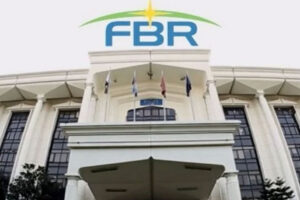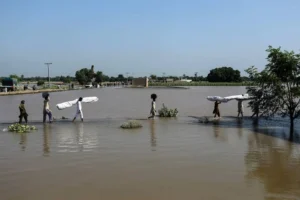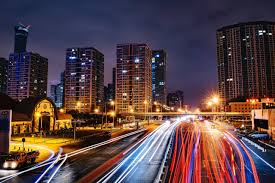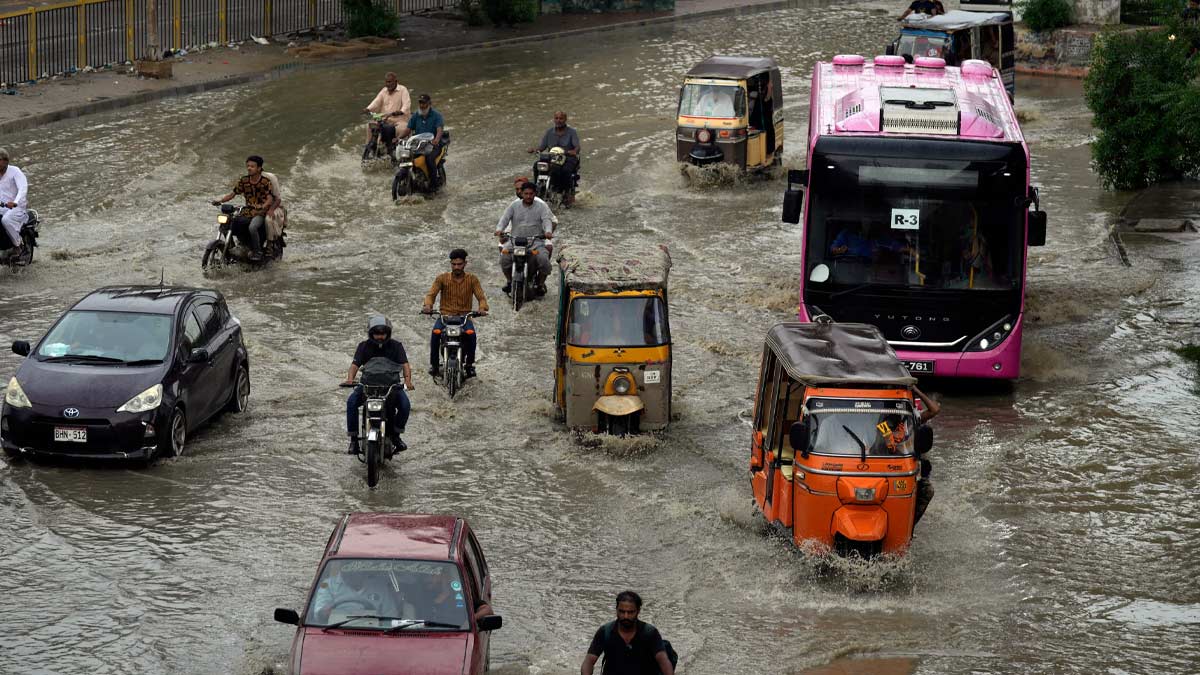A site revered by millions of Sikhs across the globe has been severely impacted by nature’s fury. The holy shrine of Kartarpur Sahib Gurdwara Submerged almost completely under floodwaters following heavy monsoon rains and swollen rivers in Pakistan. Images and videos shared on social media show the iconic white structure surrounded by murky waters, sparking sadness and concern among devotees worldwide.
Officials have confirmed that emergency teams are monitoring the situation, but the full extent of the damage will only be known once water levels recede. For now, the shrine remains inaccessible, and relief authorities are focusing on nearby villages that have also been inundated.
A Spiritual Landmark of Global Significance
Kartarpur Sahib holds unparalleled significance for the Sikh faith. Located near the Pakistan–India border in Narowal District, it is the final resting place of Guru Nanak Dev Ji, the founder of Sikhism. The corridor built in 2019 to allow pilgrims from India visa-free access was hailed as a symbol of peace and interfaith harmony.
Seeing the phrase Kartarpur Sahib Gurdwara Submerged splashed across news headlines is heartbreaking for followers who view the site as a deeply spiritual anchor. It is not just an architectural marvel but also a symbol of hope and cross-border unity.
Floods in Punjab and Their Widespread Impact
The catastrophic flooding has affected several districts of Punjab, with Narowal among the hardest hit. Persistent monsoon rains combined with upstream water releases created a surge in nearby rivers, spilling over into farmlands, settlements, and religious landmarks.
Authorities report that dozens of villages are under several feet of water, forcing thousands of families to relocate. Agricultural losses are mounting, and infrastructure damage continues to rise. Amid this devastation, the news that Kartarpur Sahib Gurdwara Submerged adds to the emotional trauma for Sikh communities both in Pakistan and around the globe.
Government and PDMA Response
The Provincial Disaster Management Authority (PDMA) has confirmed that rescue teams are active in Narowal district. Efforts are being made to redirect water flow away from high risk areas, though heavy rains persist. Boats have been deployed to evacuate stranded villagers, and medical camps are being set up for the affected population.
Government officials acknowledged the religious importance of the site and assured that preservation efforts will be undertaken once conditions improve. They stressed that safeguarding lives currently remains the first priority, but restoring Kartarpur to its original state would be a moral commitment.
Voices From the Sikh Community
As news spread that Kartarpur Sahib Gurdwara Submerged under floodwaters, Sikh communities in India, Pakistan, and abroad expressed deep sorrow. Many shared memories of their personal pilgrimages to the site, recalling the peace and inspiration they felt while visiting Guru Nanak’s resting place.
Community leaders urged both the Pakistani and Indian governments to collaborate on preserving the landmark against future natural disasters. Sikh organizations have also offered support in rebuilding and protecting the shrine. For many, this disaster is not just about infrastructure it is about a spiritual connection that binds millions together.
Historical Resilience of the Shrine
This is not the first time Kartarpur has faced challenges. Over centuries, the shrine has endured natural disasters, political disruptions, and even partition era tensions. Each time, it has emerged as a symbol of perseverance and faith.
The current reality of Kartarpur Sahib Gurdwara Submerged again tests this resilience. Devotees remain hopeful that, once floodwaters recede, the shrine will be restored stronger than before, continuing its legacy as a destination of peace and devotion.
Climate Change and Flooding in Pakistan
Environmental experts warn that the recurring floods across Pakistan highlight the urgent threat of climate change. Erratic rainfall patterns, accelerated glacial melt, and poor water management systems have amplified the impact of monsoons.
The tragedy that Kartarpur Sahib Gurdwara Submerged is part of a broader pattern where cultural and religious landmarks, in addition to civilian lives, increasingly face climate related risks. Analysts stress on long-term investments in flood defenses and river management as essential to protect heritage sites.
Humanitarian Concerns
While the damage to the Kartarpur shrine is emotionally devastating, thousands of families living around Narowal face equally dire challenges. Relief organizations are reporting shortages of food, tents, and clean water. With crops destroyed and livestock lost, local economies may take months to recover.
The Sikh community worldwide has begun mobilizing support, with representatives in Canada, the UK, and the US preparing to send aid through charitable organizations. Their appeals emphasize both humanitarian assistance for local residents and restoration support for Kartarpur Sahib.
The Symbolism of Kartarpur
Beyond its physical beauty, Kartarpur Sahib has long symbolized peace between neighbors. The construction of the Kartarpur Corridor in 2019 was a rare instance of goodwill between India and Pakistan, allowing thousands of Sikh pilgrims to access the historic site directly.
Now, with Kartarpur Sahib Gurdwara Submerged, faith leaders are calling on both governments to once again set politics aside and join hands in protecting a heritage that belongs to humanity at large.
Road to Restoration
Once waters recede, attention will shift toward the restoration of the shrine. Early assessments suggest significant damage to surrounding facilities, though experts believe the main structure may withstand most of the flooding. Engineers, architects, and conservationists are preparing plans for potential reconstruction.
Both the Pakistan Government and Sikh organizations abroad are expected to play crucial roles in financing and supervising the restoration efforts. Devotees remain confident that the shrine will return to its full glory, but the urgency of better protective measures is clearer than ever before.
Conclusion
The headlines that Kartarpur Sahib Gurdwara Submerged remind us how vulnerable even sacred landmarks are to nature’s power. This spiritual site, central to Sikh identity, now sits at the mercy of floodwaters. Nearby communities continue to struggle for survival.
As rescue work goes on, there is still hope. Unity, faith, and determination can guide the rebuilding process. The shrine is more than architecture it is a beacon for millions who follow Guru Nanak’s message of harmony. Its revival will stand as a symbol of resilience, faith, and cross‑border solidarity.
















